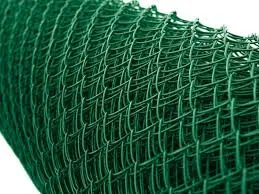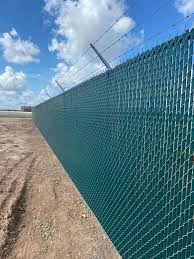Border Fence Garden Landscape Edging Fencing Roll Outdoor Decor
Effective silt fence installation is crucial in ensuring environmental protection and meeting regulatory compliance on construction sites. Silt fences, sometimes underestimated, play a pivotal role in sediment control. Drawing from years of industry experience and professional expertise, this article delves into the meticulous process of silt fence installation, underscoring its importance.
Silt fencing serves as a temporary sediment barrier, primarily composed of permeable fabric stretched across a series of posts. Its primary function is to intercept and detain small amounts of sediment from disturbed areas during construction or landscaping projects. The correct installation and maintenance of these fences are essential to prevent sediment from leaving the site and contaminating water bodies.
To start, selecting the right materials is fundamental. Quality silt fence fabric should be both durable and permeable, balancing filtration with strength to resist weathering. This fabric is typically made from woven polypropylene, engineered to withstand ultraviolet degradation and the physical stresses of sediment load. Pairing high-quality fabric with sturdy wooden or metal posts ensures the fence remains erect and functional throughout the construction period.
Site assessment is the next critical step. Experience indicates that the success of a silt fence is heavily dependent on its placement. It's crucial to install the fence along the contour of the land, creating a continuous barricade to prevent sediment breaching. Proper planning involves identifying low-lying areas where water naturally accumulates and ensuring these zones are effectively barricaded.
Installation technique demands accuracy and expertise. Begin by using a trenching tool to dig a small trench, usually six inches deep, along the marked contour line. This trench acts as an anchor for the fabric, preventing water from undermining the barrier. Once the fabric is placed into the trench, backfill it with soil and compact it to eliminate gaps. The posts, typically spaced six to eight feet apart, should be driven at least one to two feet into the ground, ensuring stability.
Stapling or tying the fabric to the posts requires careful application to avoid sagging. The fabric should be taut and installed a couple of inches above the trench to account for potential sagging due to sediment buildup. Careful attention ensures the fence can effectively withstand the pressures of wind and rain while remaining functional.silt fence installation
The efficacy of silt fence systems relies on regular maintenance and inspection. Regular site inspections, especially after heavy rainfall, are imperative. During these checks, observe for any tears in the fabric and signs of sediment overflow. Early detection of breaches and immediate repairs are essential to restoring functionality and maintaining compliance with environmental regulations.
Furthermore, silt fence replacement is inevitable, particularly in long-term projects. Sediment accumulation can cause wear and lead to structural failures. Thus, maintaining a schedule for periodic replacement based on site-specific conditions and weather patterns is recommended.
By adhering to these industry-proven practices, construction sites not only meet local environmental regulations but also contribute positively to erosion control initiatives. Professional, well-maintained silt fence installations reflect a company's commitment to environmental stewardship, showcasing a proactive approach to sustainable construction practices.
Reliable resources and continuing education are paramount to honing expertise in environmental compliance. Engaging with regulatory publications and attending workshops offers insights into evolving best practices, ensuring your techniques remain cutting-edge. Industry certifications, such as those offered by environmental protection organizations, further underscore a commitment to professionalism and environmental responsibility.
In essence, the meticulous installation and maintenance of silt fences exemplify an effective sediment control strategy rooted in expertise, authority, and trustworthiness. By upholding these standards, construction professionals play a vital role in safeguarding natural waterways and demonstrating environmental accountability.


















